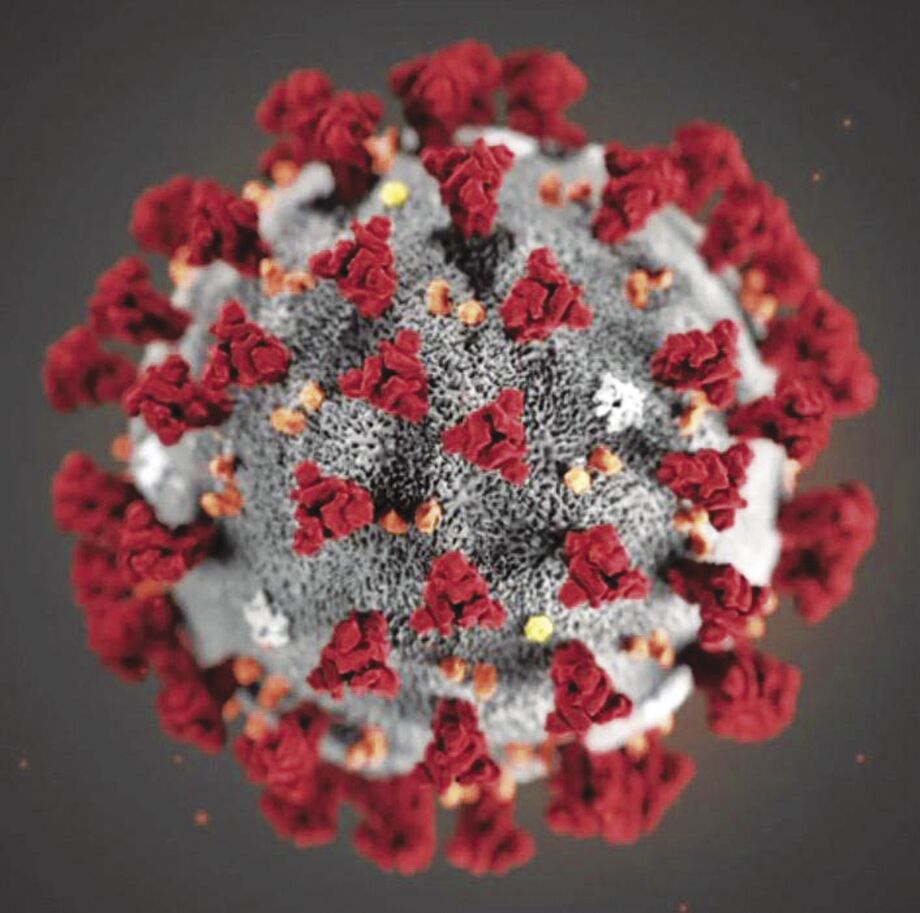COVID cases continue to drop
Published 2:00 pm Friday, February 11, 2022

- A COVID-19 particle.
The number of COVID-19 cases in Baker County continues to drop for the third straight week.
After reaching a weekly record of 183 cases from Jan. 16-22, the county’s weekly totals dropped to 165 and 115, a decline of 37%.
Through the first five days of the current weekly measuring period — Feb. 6-12 — the county reported 54 cases. If that rate continues for the last two days of the week, the county’s weekly total would drop by an additional 32% from the previous week, and by 57% from the record.
The county’s rate of positive tests has also declined, from 33.2% of tests from Jan. 16-22, to 19% for the current week (through Feb. 10).
The Oregon Health Authority (OHA) on Thursday, Feb. 10, reported the COVID-19-related death of a Baker County resident.
Details, including the person’s age and gender, were not available by press time on Friday, Feb. 11.
It was the county’s second COVID-19-related death during February. There were four such deaths in January.
The county’s total during the pandemic is 44 COVID-19-related deaths.
State health officials said on Thursday, Feb. 10, that Oregon has passed the crest of the omicron wave, but they cautioned that the state still faces a dangerous time before levels drop back to where they were in June 2021.
“The number of people hospitalized with COVID-19 has peaked and will steadily recede until reaching pre-omicron levels by the end of March,” according to the Feb. 10 forecast by Oregon Health & Science University.
But the fifth and most widely-spread of the waves of virus that have hit Oregon in the past two years is not over.
“It’s important for people to stick with masking through the next several weeks,” said Peter Graven, director of the OHSU Office of Advanced Analytics.
The trend is backed up by the averaging of 13 major medical, university and scientific forecast models submitted regularly to the U.S. Centers for Disease Control and Prevention.
In a briefing with state lawmakers late Monday, Feb. 7, Graven said he was seeing sustained trends that omicron is very high, but receding.
“I believe we are at the peak and we are kind of bouncing around a little bit as it comes down,” he said.
Hospitalizations are the most accurate measure of the impact and direction of a virus surge. Graven’s report showed the state would be under 1,000 hospitalizations a day by Feb. 18. It expects cases to drop under 500 around March 23.
The count will go under 200 by April 23. By the second week of May, hospitalizations should fall below 100.
Estimates of severe cases of COVID-19 in OHSU reports near the beginning of 2022 showed up to 3,000 people could be hospitalized in Oregon on peak days in the wave.
“In the current surge, a lot more states went up much much higher than us and more steeply,” Graven said.
OHSU projected 80% of the state population followed the indoor mask mandate during recent weeks. With masking and a relatively high level of vaccination, Oregon was dealt a less powerful blow than other states where the safeguards were ignored or actively opposed.
The hospitals have filled up during the omicron wave with mostly unvaccinated people either suffering from severe cases of the virus, or hospitalized for other reasons — surgery, accidents, heart attacks — but blood tests showed they were positive for COVID-19.
The forecast released Thursday, Feb. 10, shows the average number of deaths rising from about 13 per day now to a peak of 18 in early March. It will then follow the same path as infections and severe cases with a relatively steep decline. Deaths are projected under five per day by the end of March.
Breakthrough cases
Statewide, 46% of cases from Jan. 30 to Feb. 5 were breakthrough, defined as an infection in a fully vaccinated person. That means a person who has had both doses of the Moderna or Pfizer vaccines or one dose of Johnson & Johnson, but not necessarily a booster shot.
Graven, from OHSU, said the omicron wave has been much less dangerous for people who are vaccinated, and in particular those who have had a booster dose.
“Once you get boosted, you pretty much get removed from the possibility of getting hospitalized for much,” Graven said.
According to OHA’s latest breakthrough case report, almost 30% of COVID-19-related deaths in Oregon during January were breakthrough cases.
In Baker County, 46.1% of cases for the week Jan. 30 to Feb. 5 — 53 of 115 — were breakthrough cases, the county’s highest percentage during the pandemic.
OHA does not list the number of breakthrough case deaths by county.
Schools
Mark Witty, Baker School District superintendent, said the absentee rate — which can result from a variety of issues, including COVID-19 infection or possible exposure — has dropped in district schools.
According to OHA, the most recent onset of an infection in a local school was on Jan. 31 at South Baker Intermediate.
There are no current outbreaks in Baker County schools, according to OHA.
Vaccinations
As has been the case since last fall, Baker County’s vaccination rate is the fifth-lowest among Oregon’s 36 counties. As of Thursday, Feb. 10, 55.5% of Baker County residents 18 or older have had at least one dose of vaccine, according to OHA. The statewide average is 82.6%.
The four counties with a lower vaccination rate are Lake (45.7%), Malheur (50.1%), Grant (51.3%) and Gilliam (52.2%).
Rates for other counties in Northeastern Oregon: Wallowa (71.9%), Union (60.6%), Morrow (59.9%) and Umatilla (58.5%).
Baker County’s running seven-day daily average of doses administered has dropped from 34 on Jan. 13 to 12 on Feb. 8.
Gary A. Warner of the Oregon Capital Bureau contributed to this story.









